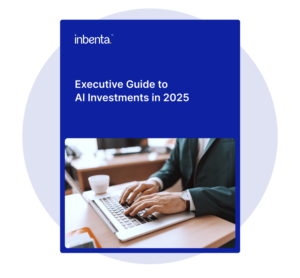Since its foundation as an academic discipline in 1955, Artificial Intelligence (AI) research field has been divided into different camps, of which symbolic AI and machine learning. While symbolic AI used to dominate in the first decades, machine learning has been very trendy lately, so let’s try to understand each of these approaches and their main differences when applied to Natural Language Processing (NLP).
What is machine learning?
According to Wikipedia, machine learning is an application of artificial intelligence where “algorithms and statistical models are used by computer systems to perform a specific task without using explicit instructions, relying on patterns and inference instead. (…) Machine learning algorithms build a mathematical model based on sample data, known as ‘training data’, in order to make predictions or decisions without being explicitly programmed to perform the task”.
In simpler words, machine learning technology uses an algorithm to teach the computer how to solve problems and gain insights from solving those problems. That’s how the computer learns automatically, without human intervention or assistance: by observing and looking for patterns in data and using feedback loops to monitor and improve its predictions. While humans would be overwhelmed with masses of data, machine learning thrives and is able to evolve its understanding in order to make better decisions in the future, based on the examples that were provided to it.
Machine learning applied to NLP
Machine learning can be applied to lots of disciplines, and one of those is Natural Language Processing, which is used in AI-powered conversational chatbots.
Here’s how machine learning works in this specific case: the person who oversees the bot, usually called a Botmaster, feeds the engine with as much relevant data as possible. The bot then gets asked questions by its users and it automatically decides which answer to push for every intent it’s queried for. The Botmaster then needs to review those responses and has to manually tell the engine which answers were correct and which ones were not. That is how the machine learns how to serve the correct answer to an intent.
As you can easily imagine, this is a very heavy and time-consuming job as there are many many ways of asking or formulating the same question. And if you take into account that a knowledge base usually holds on average 300 intents, you now see how repetitive maintaining a knowledge base can be when using machine learning.
Don’t get us wrong, machine learning is an amazing tool that enables us to unlock great potential and AI disciplines such as image recognition or voice recognition, but when it comes to NLP, we’re firmly convinced that machine learning is not the best technology to be used.
What is symbolic AI?
Symbolic Artificial Intelligence, also known as Good Old-Fashioned AI (GOFAI), uses human-readable symbols that represent real-world entities or concepts as well as logic (the mathematically provable logical methods) in order to create ‘rules’ for the concrete manipulation of those symbols, leading to a rule-based system.
In a nutshell, symbolic AI involves the explicit embedding of human knowledge and behavior rules into computer programs.
The symbolic approach applied to NLP
One of the many uses of symbolic artificial intelligence is with Natural Language Processing for conversational chatbots. With this approach, also called “deterministic”, the idea is to teach the machine how to understand languages in the same way as we, humans, have learned how to read and how to write. In order to do so, we went to school and we learned how to structure language through rules, grammar, conjugation, and vocabulary. Computational linguists do exactly the same: they use rules, lexicon and semantic in order to teach the bot’s engine how to understand a language.
Using symbolic AI, everything is visible, understandable and explainable, leading to what is called a ‘transparent box’ as opposed to the ‘black box’ created by machine learning.
As a consequence, the Botmaster’s job is completely different when using Symbolic AI technology than with Machine Learning-based technology as he focuses on writing new content for the knowledge base rather than utterances of existing content. He also has full transparency on how to fine-tune the engine when it doesn’t work properly as he’s been able to understand why a specific decision has been made and has the tools to fix it.
So to summarize, one of the main differences between machine learning and traditional symbolic reasoning is how the learning happens. In machine learning, the algorithm learns rules as it establishes correlations between inputs and outputs. In symbolic reasoning, the rules are created through human intervention and then hard-coded into a static program.
If machine learning can appear as a revolutionary approach at first, its lack of transparency and a large amount of data that is required in order for the system to learn are its two main flaws. Companies now realize how important it is to have a transparent AI, not only for ethical reasons but also for operational ones, and the deterministic (or symbolic) approach is now becoming popular again.
We hope that by now you’re convinced that symbolic AI is a must when it comes to NLP applied to chatbots. Learn more about Inbenta Chat.










